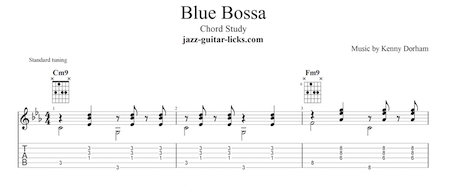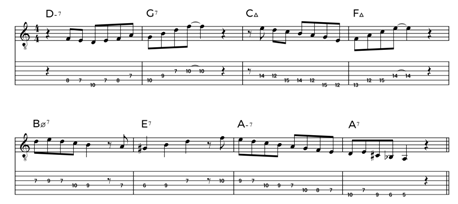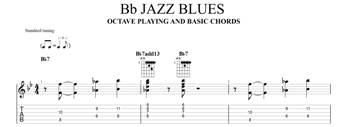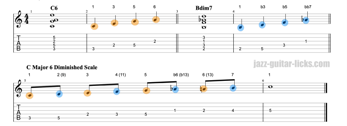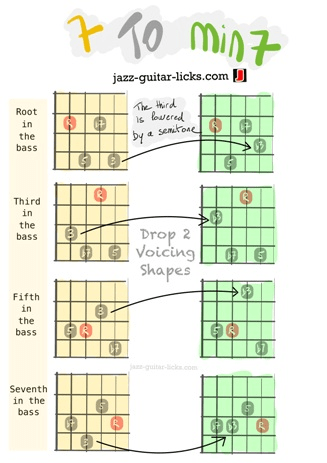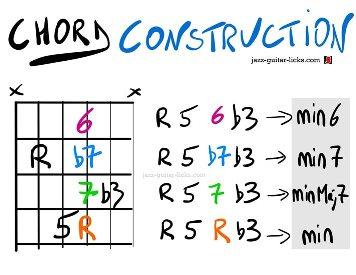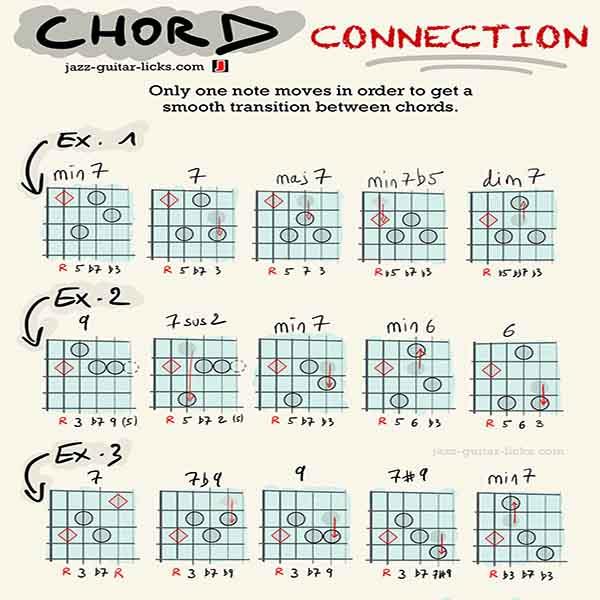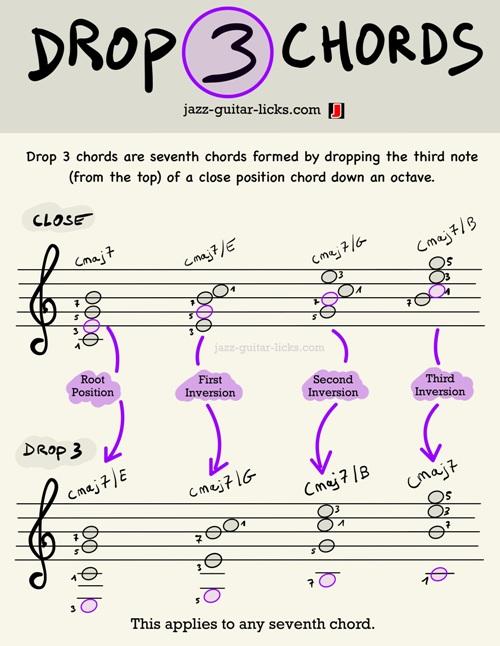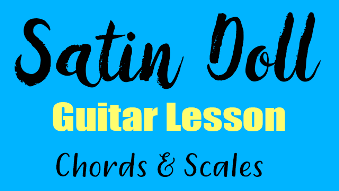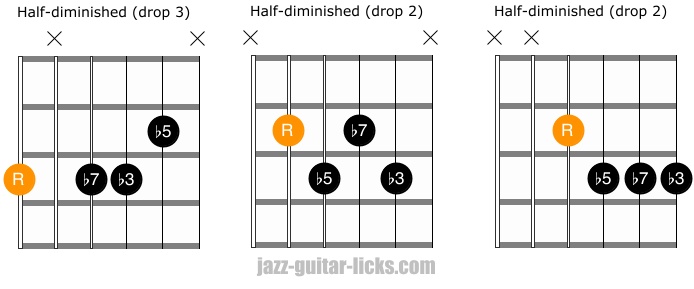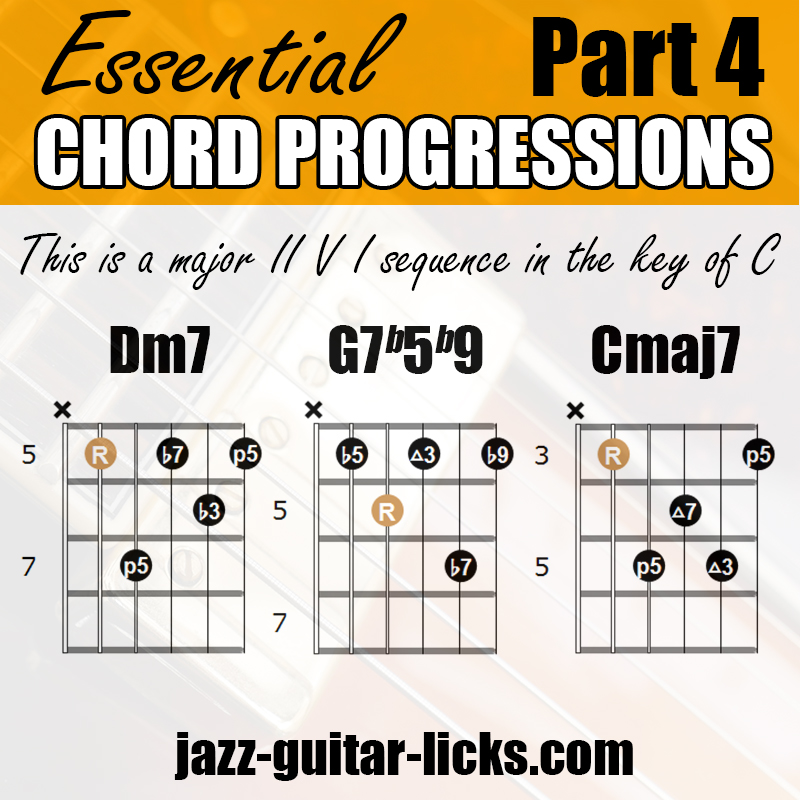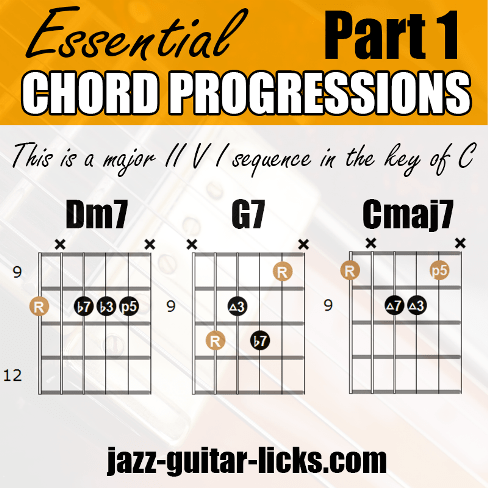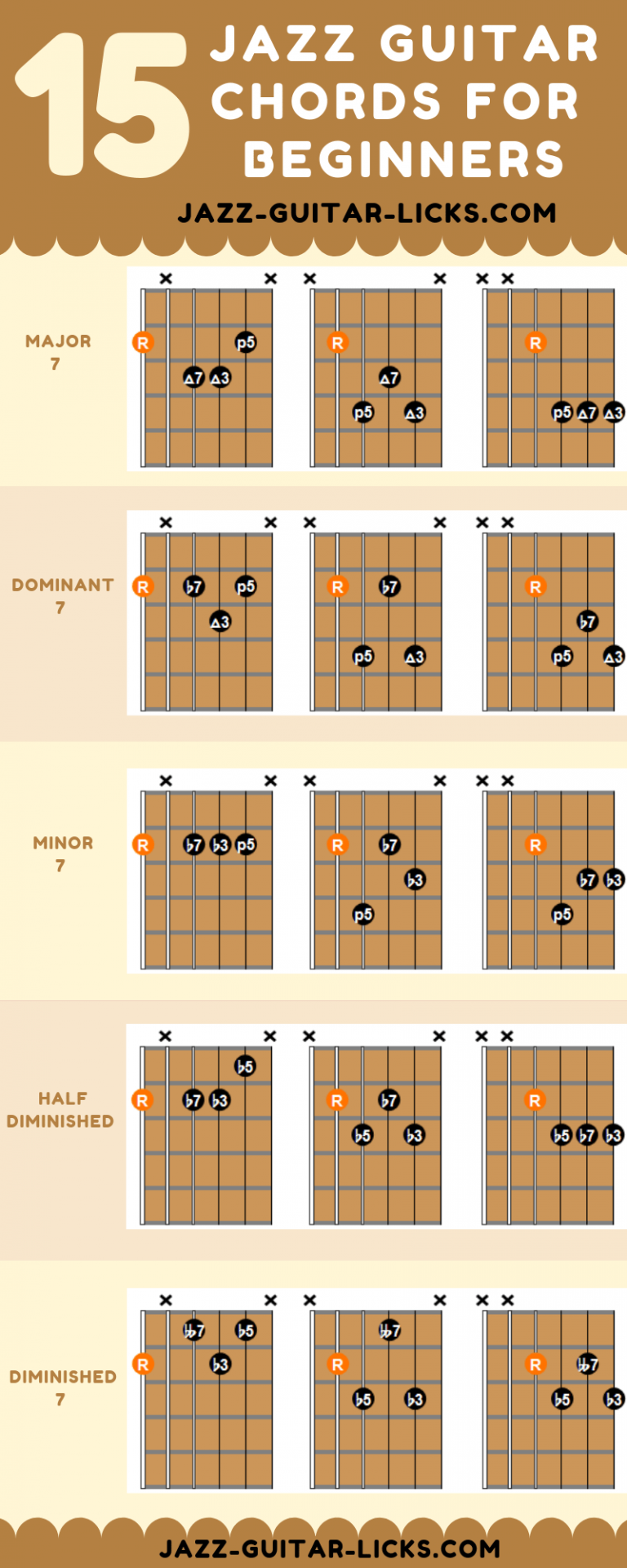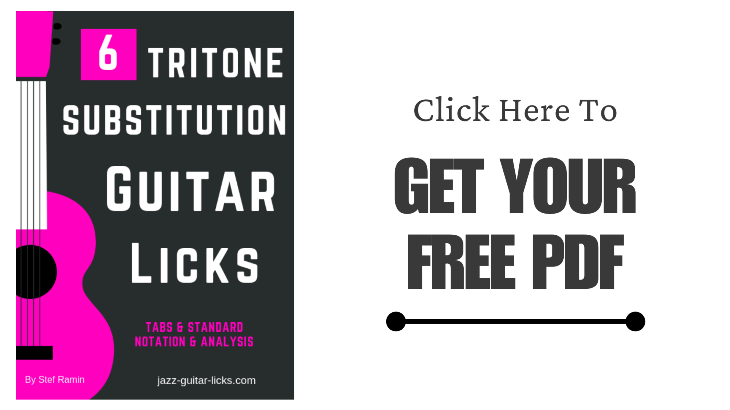jazz guitar chords
-
Blue Bossa - Guitar Chord Study For Beginners - YouTube Short Video - Diagrams & Tabs
- By jazz-guitar-licks
- On 2024-02-08
- In Jazz Guitar Lessons
- 0 comments
"Blue Bossa" is a jazz standard composed by trumpetist Kenny Dorham and one of the most popular Bossa Nova song.
The tune has since become a popular jazz standard, covered by numerous artists as Joe Henderson, Art Pepper, Dexter Gordon and many more.
This guitar lesson provides an easy chord study with tab / notation and YouTube short video to learn how to comp over it.
You'll find the related PDF transcription in the GUMROAD STORE.
-
8 Steps to Learn Any Jazz Standard
- By jazz-guitar-licks
- On 2024-01-03
- In Jazz Guitar Lessons
- 0 comments
Guest Post By Jack Handyside at pickupmusic.com
Jazz standards are some of the most beautiful and interesting pieces of music ever written, but learning these complex songs and committing them to memory can feel overwhelming if you don’t know where to start.
Luckily for you, we’re here to help! This article will introduce you to a tried and true, eight-step method that you can use to learn any jazz standard. Our focus today will be on the classic jazz standard Autumn Leaves written by Joseph Kosma.
-
Basic Chords And Octave Playing Over A Blues In Bb - Lesson With PDF And YouTube Short Video
- By jazz-guitar-licks
- On 2023-06-10
- In Jazz Guitar Lessons
- 0 comments
This jazz guitar lesson for beginners provides an easy study to practice octave playing and basic jazz chords over a Blues in Bb. It is available as a YouTube Short Video and a free transcription in PDF with chord shapes tab and standard notation.
-
Solar By Miles Davis - 2 Chord Studies For Beginners
- By jazz-guitar-licks
- On 2023-05-23
- 0 comments
Here are two easy guitar chord studies to apply over the jazz tune Solar by Miles Davis. The first one implies 3-Note chords while the second implies 4-note chords. Free PDF and YouTube Short video available.
-
The Major Sixth Diminished Scale - Jazz Guitar Lesson Around The Barry Harris Concept
- By jazz-guitar-licks
- On 2023-03-20
- In Jazz Guitar Lessons
- 2 comments
This guitar lesson is about a harmonic concept mapped out and developped by jazz musician Barry harris that can be found in the book "The Barry Harris Harmonic Method For Guitar" by Alan Kingstone.
This blog article details a little bit more in depth about what is the major 6 diminished scale and how to harmonize it with major 6 and diminished 7 chords.
FREE PDF AVAILABLE HERE ON THE GUMROAD STORE
-
Dominant 7 To Minor 7 Chords - Drop 2 Voicings Shapes For Guitar
- By jazz-guitar-licks
- On 2022-09-07
- In Guitar Cheat Sheets, Methods, eBooks, Posters
- 0 comments
This guitar cheat sheet shows the relation between a dominant 7 chord and a minor 7 chord. All the shapes are drop 2 voicings with bass notes on the fifth string. The aim being to move only one note at a time, separated by a half step (one semitone).
-
Guitar Chord Construction and Connection - Cheat Sheets With Shapes and Intervals
- By jazz-guitar-licks
- On 2021-12-12
- In Chords / Voicings
- 0 comments
This page provides a collection of cheat sheets explaining in a simple and effective way how guitar chords are built and how they are connected one to the other. The idea is to understand where are located each chord tone of a specific voicing and how to connect these chords them by moving only one note at a time. Notice that this page is regularly updated with new shapes, don't forget to subscribe the newsletter to stay informed.
-
Extended and Altered Dominant Guitar Chord Shapes - Free PDF Chart
- By jazz-guitar-licks
- On 2021-10-04
- In Guitar Cheat Sheets, Methods, eBooks, Posters
- 0 comments
This free guitar chord chart available as a PDF file contains the most important altered and extended dominant guitar chord shapes that any guitar player should know. It is totally free (or Pay What You Want) in return, don't hesitate to support this website.
-
Chord Connections - 3 Exercises For Guitar - PDF Cheat Sheet
- By jazz-guitar-licks
- On 2021-09-20
- In Chords / Voicings
- 0 comments
Here is a cheat sheet containing three easy exercises for connecting basic guitar chord shapes as min7, maj7, dim7, m7b5, 7sus, 9th, 7#9, 7b9, min6, 6. It is available for free (or Pay What You Want) in Jazz Guitar Licks Gumroad Shop.
-
Drop 3 Chord Construction - Music Theory - Free Printable PDF
- By jazz-guitar-licks
- On 2021-09-09
- In Guitar Cheat Sheets, Methods, eBooks, Posters
- 0 comments
This music theory cheat sheet file explains effectively how drop 3 chords are built. You can download the printable PDF file (better quality) for free (or make a donation to support this website) following this link.
-
Satin Doll - Chords and Scales For Guitar - Lesson For Beginners
- By jazz-guitar-licks
- On 2021-03-22
- In Jazz Standards
- 0 comments
Satin Doll by Duke Ellington and Billy Strayhorn, witten in 1953, is one of the most famous jazz tune. It has been recorded by many jazz musicians as Wes Montgomery, Ella Fitzgerald, Mc Coy Tyner, Oscar Peterson and of course Duke Ellington himself. It has become a classic jazz standard, a must-hear, very popular at jam sessions.
This guitar lesson with chord shapes and scale charts explains how to play easy jazz chords and what basic scales to choose for improvising over Satin Doll.
-
15 Easy Jazz Guitar Chords For Beginners
- By jazz-guitar-licks
- On 2020-02-28
- In Chords / Voicings
- 0 comments
This lesson provides 15 basic jazz guitar chords that every beginning jazz guitar player should know.
These chords are grouped into five families :
- Major seventh chords (Maj7)
- Minor seventh (m7)
- Dominant 7th (7)
- Half diminished / minor seventh flat fifth (m7b5)
- Diminished 7th (dim7)
-
Variations Of Jazz Blues Progression - 10 Guitar Exercises - YouTube Video Lesson
- By jazz-guitar-licks
- On 2020-02-12
- 0 comments
A new video has been published on the YouTube channel. It contains 10 exercises with chord shapes and numeral analysis about different types of variations of the jazz blues progression for jazz guitar rhythm.
